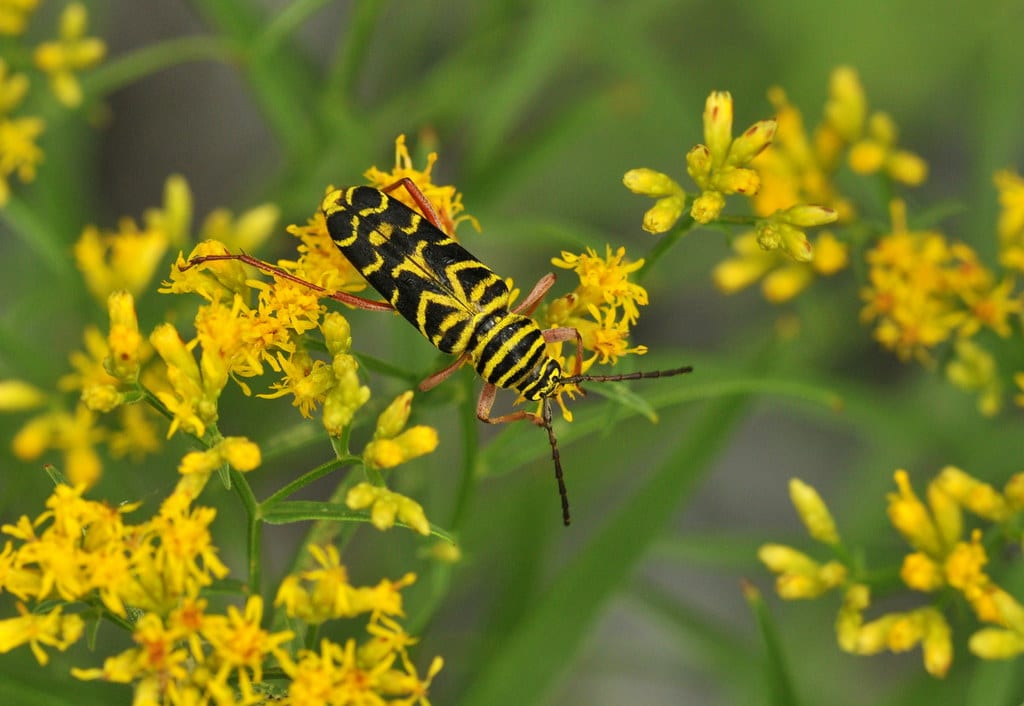Polk County’s Most Wanted – Locust Borer
Have you seen Locust Borer?

In a joint effort to expand the knowledge and understanding of the flora and fauna of Polk County, Conserving Carolina and botanist/ecologist David Campbell need your help in locating this month’s “Polk County’s Most Wanted—Insect,” the Locust Borer (Megacyllene robiniae), a Long-horned Beetle.
What are Locust Borer’s?
As its common name suggests, the Locust Borer does indeed feed (in its larval stages) on trees in the Locust family – specifically Black Locust (Robinia pseudoacacia). Indeed, one may also see in the last part of the Locust Borer’s scientific name ‘robiniae’ the relationship with its host is most evident. The Locust Borer belongs to a large family of beetles known as Long-horned Beetles (Cerambycidae). Members of the Cerambycidae are numerous and widespread, typically (although by no means exclusively) feeding on dead and dying woody plant species. Therefore, Long-horned Beetles are often beneficial as nutrient recyclers in our ecosystems. The Locust Borer bears a striking resemblance to stinging wasps, such as Yellow Jackets – this form of mimicry (known as Batesian mimicry) helps the beetles to avoid predation by birds. At first glance, even human observers may mistake this beetle for some type of wasp.
The Locust Borer is by no means rare, but we would like to learn more about its distribution in Polk County and the southern Appalachians in general. The life cycle takes approximately one year, with eggs being laid on Black Locust in the fall and larvae feeding on wood until pupation in late spring and early summer of the following year. Adults emerge from late August until early October. The best method to employ when searching for adult beetles is to seek out Goldenrods, where the adults feed on pollen. If one can locate a patch of Goldenrod adjacent to a stand of Black Locust – that is ideal. The beetles prefer sunny, warm days and may be observed feeding and mating on the Goldenrod flowers. Sometimes, many dozens of beetles may be observed within the space of just one hour – at other times, no beetles may be observed at all in areas they were formerly common in previous years. These beetles clearly play a valuable role as pollinators for many of our Goldenrod species.
August until early October is the most opportune time to search for Locust Borers.
What can you do?
If any of our readers happen to locate a site for this beautiful species of beetle, please submit a photograph to Pam Torlina at Conserving Carolina by email at [email protected], so we can document its occurrence in Polk County.
For more information
See more about “Polk County’s Most Wanted.” Download and print a “Pocket Guide” with all of the “Most Wanted” plants, animals, and habitats that you can be on the lookout for when you’re out in the field!
A Biological Inventory of Polk County
Now available for download: “An Inventory of the Significant Natural Areas of Polk County, North Carolina,” a culmination of David Campbell’s seven years in the field documenting the rare and significant flora and fauna in Polk County.